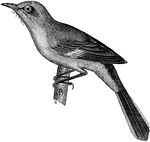
Mockingbird
"Mocking-Birds. Bill much shorter than head, scarcely curved as a whole, but with gently-curved commissure,…

Catbird
"Cat-Bird. Slate-gray, paler and more grayish-plumbeous below; crown of head, tail, bill, and feet black.…
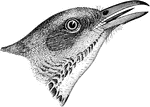
Brown Thrasher
"Upper parts uniform rust-red, with a bronzy lustre. Concealed portions of quills fuscous. Greater the…

Bow-Billed Thrasher
"Above, grayish-brown, nearly uniform; wing- coverts and quills with slight whitish edging, the edge…

Arizona Thrasher
"Bill shorter than head, comparatively stout at base, very acute at tip, the culmen quite convex, the…

St. Lucas Thrasher
"Upper parts uniform ashy-brown; wings and tail similar, but rather purer and darker brown, the former…

California Thrasher
"No spots anywhere; wings and tail without decided barring or tipping. Bill as long as the head or longer,…

Crissal Thrasher
"Brownish-ash, with a faith olive shade, the wings and tail purer and darker fuscous, without white…

American Dipper
"Adult, in summer: Slaty-plumbeous, paler below, inclining on the head to sooty-brown. Quills and tail-feathers…
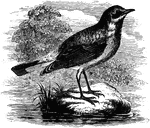
Wheatear
Wheatear male has a bluish-gray back, black patch on ear, a white rump and sides of tail, and black…
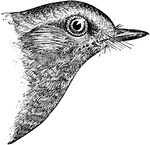
Eastern Blue-Bird
"in full plumage: Rich azure-blue, the ends of the wing-quills blackish; throat, breast, and sides of…

Flag of American Samoa, 2009
Color flag of American Samoa. Blue, with a white triangle edged in red that is based on the fly side…

Flag of American Samoa, 2009
Black and white outline flag of American Samoa. Blue, with a white triangle edged in red that is based…

Flag of Morocco, 2009
Color flag of Morocco. Red with a green pentacle (five-pointed, linear star) known as Sulayman's (Solomon's)…

Flag of Morocco, 2009
Black and white outline flag of Morocco. Red with a green pentacle (five-pointed, linear star) known…

Flag of Slovenia, 2009
Color flag of Slovenia. Three equal horizontal bands of white (top), blue, and red, with the Slovenian…

Flag of Slovenia, 2009
Black and white outline flag of Slovenia. Three equal horizontal bands of white (top), blue, and red,…
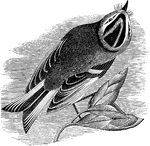
Golden Crested Kinglet
"Upper parts olive-green, more or less bright, sometimes rather olive-ashy, always brightest on the…
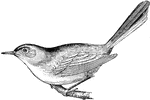
Blue-gray Gnat-catcher
"Grayish-blue, bluer on the crown, hoary on the rump, the forehead black, continuous with a black superciliary…
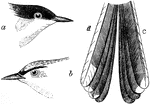
Black-capped Gnat-catcher
"- a, head of a (Polioptila nigriceps) Black-capped Gnat-catcher. b, head of a(Polioptila caerulea)…
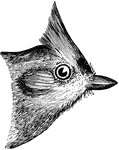
Tufted Titmouse
"Entire upper parts ashy, the back usually with a slight olivaceous shade, the wings and tail rather…
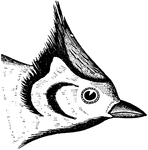
Bridled Titmouse
"Upper parts olivaceous-ash, wings and tail darker, edged with the color of the back, or even a brighter…

13 Star United States Flag, 1776
Color illustration of a 13 Star United States flag. The original 13 stars represent the states of Delaware,…

43 Star United States Flag, 1890
Color illustration of a 43 Star United States flag. The additional stars represent the states of Idaho,…

13 Star United States Flag, 1776
Black line illustration of a 13 Star United States flag. The original 13 stars represent the states…

43 Star United States Flag, 1890
Black line illustration of a 43 Star United States flag. The additional stars represent the states of…
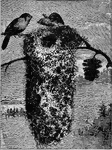
Two Least Bush-Tit Sitting on their Nest
"Dull lead-color, frequently with a brownish or olivaceous shade, the top of the head abruptly darker…
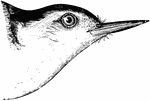
White-Breasted Nuthatch
"Upper parts, central tail-feathers, and much edging of the wings, clear ashy-blue; whole crown, nape,…

Red-breasted Nuthatch
"Upper parts leaden-blue the central tail-feathers the same; wings fuscous, with slight ashy edgings…

Brown-headed Nuthatch
"No black cap or white stripe on head. Upper parts dull ashy-blue; under parts sordid or muddy whitish.…
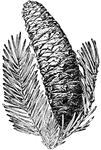
Silver Fir Tree Cone
"Picea, Silver Fir. Fig. 60. Tree, 100-200 ft: trunk 6-8 ft. in dia.: lvs. flat, distichously spreading,…
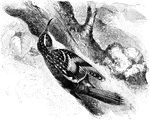
Common Brown Creeper
"Common Brown Creeper. Upper parts dark brown, changing to rusty-brown on the rump, everywhere streaked…

Rock Wren
"Upper parts pale brownish-gray, minutely dotted with blackish and whitish points together, and usually…
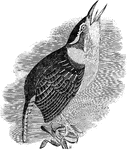
Carolina Wren
"Carolina Wren. Upper parts uniform reddish-brown, brightest on the rump, where are concealed whitish…

Winter Wren
"Winter Wren. Above brown, darker before, brighter behind, most of back, together with tail and inner…
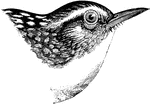
Long-billed Marsh Wren
"Long-billed Marsh Wren. T. palustris. Above clear brown, unbarred, the middle of the back with a large…
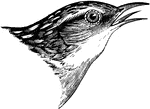
Short-billed Marsh Wren
"Short-billed Marsh Wren. Cistothorus platensis. Upper parts brown, the crown and most of the back blackish,…

Shore Lark
"Shore Lark or Horned Lark. Upper parts in general pinkish-brown, this pinkish or vinaceous or liliaceous…
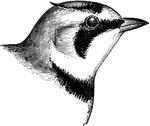
Shore Lark
"Shore Lark or Horned Lark. Upper parts in general pinkish-brown, this pinkish or vinaceous or liliaceous…

Finding the North Star
"Two stars in the Big Dipper opposite the handle indicate the direction toward the North Star, which,…

Summer Solstice
"Relative positions of the earth and the sun on June 21, the summer solstice. Summer and long days north…

Winter Solstice
"Relative positions of the earth and the sun on December 21, the winter solstice. Winter and short days…
Spring Equinox and Autumn Equinox
"Relative positions of the earth and the sun on March 21 (spring equinox) and September 21 (autumn equinox)…
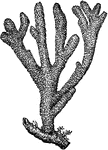
Cold-water Coral
Lophelia pertusa is a species of cold-water coral which grows in the deep waters throughout the North…
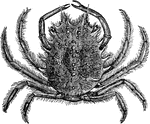
European Spider Crab
Maja squinado (the European spider crab, spiny spider crab or spinous spider crab) is a species of migratory…
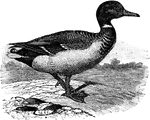
Mallard Duck
The Mallard (Anas platyrhynchos), probably the best-known and most recognizable of all ducks, is a dabbling…
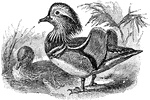
Mandarin Duck
he Mandarin Duck (Aix galericulata), or just Mandarin, is a medium-sized perching duck, closely related…
Common Mare's Tail
An illustration of a flowering branch of common mare's tail; a, flower before athesis; b, flower after…
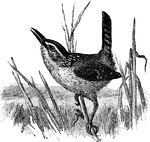
Marsh Wren
The Marsh Wren (Cistothorus palustris) is a small North American songbird of the wren family. It is…
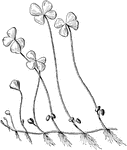
Four Leaf Clover
Four leaf clover is found in central and southern Europe, Caucasia, western Siberia, Afghanistan, S.W.…
Four Leaf Clover Sporocarp with Valves Opened
An illustration of a four leaf clover sporocarp with valves opened. Four leaf clover is found in central…
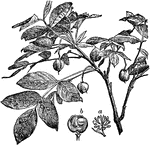
Bladdernut
"Bladder-nut. a.-- Flower. b.-- Fruit. Bladder-nut, a name of shrubs or small trees, natives of Europe,…

American Marten
The American marten (Martes americana) is a North American member of the Mustelidae family, sometimes…
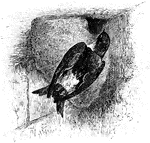
House Martin
The House Martin (Delichon urbicum), sometimes called the Northern House Martin or Common House Martin,…
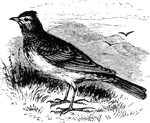
Skylark
"Sky-Lark. Upper parts grayish-brown, the feathers with darker centers; under parts whitish, tinged…

A White and Yellow Wagtail Sitting on the Rocks
A (Motacilla alba) or White Wagtail (upper) and a (Motacilla flava) Yellow Wagtail (lower) sitting on…

Yellow Wagtail Head and Foot
"The Yellow Wagtail or Motilla flava has characters of the Motacilla alva; tail shorter, not exceeding…
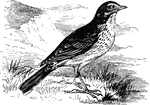
Meadow Pipit
"Meadow Pipit or Anthus pratensis. Upper parts greenish-brown distinctly marked with blackish-brown…

Black Throated Green Warbler
"Black Throated Green Warbler or Dendroica virens. Back and crown clear yellow-olive; forehead, superciliary…
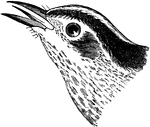
Black and White Creeper
"Black and White Creeper or Mniotilta varia. Black; edges of feathers of upper parts, coronal, superciliary,…